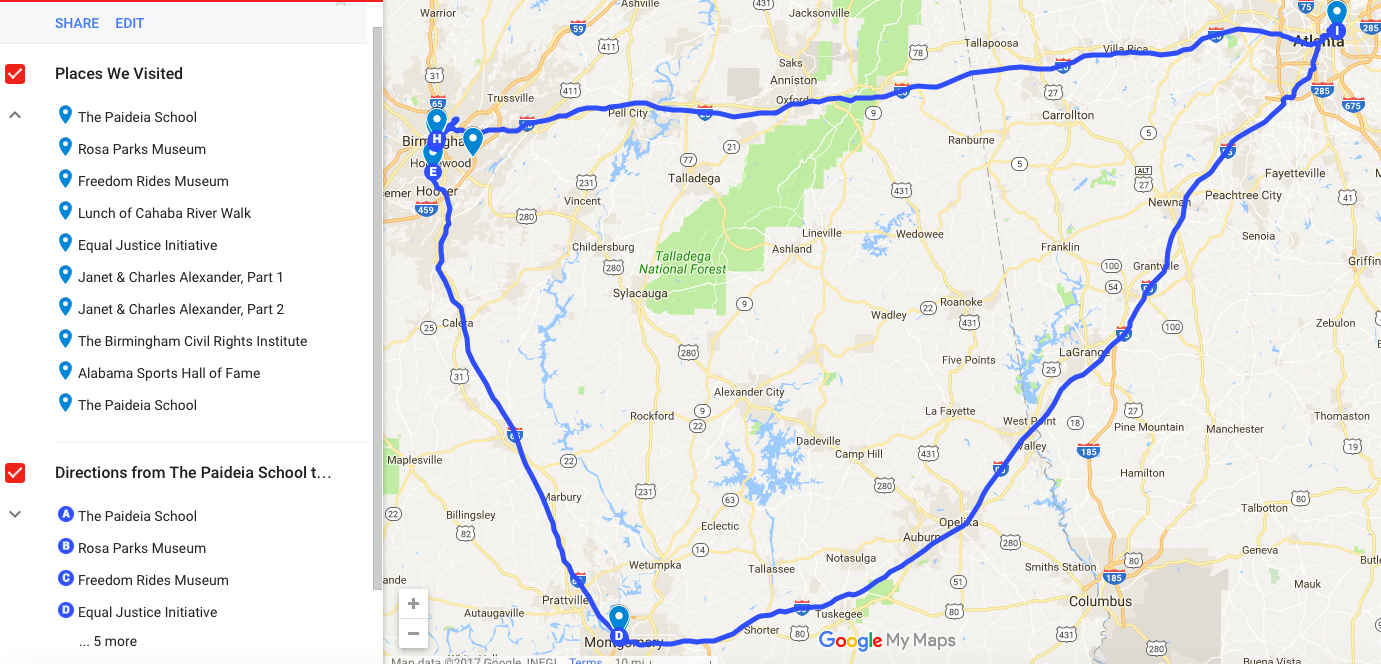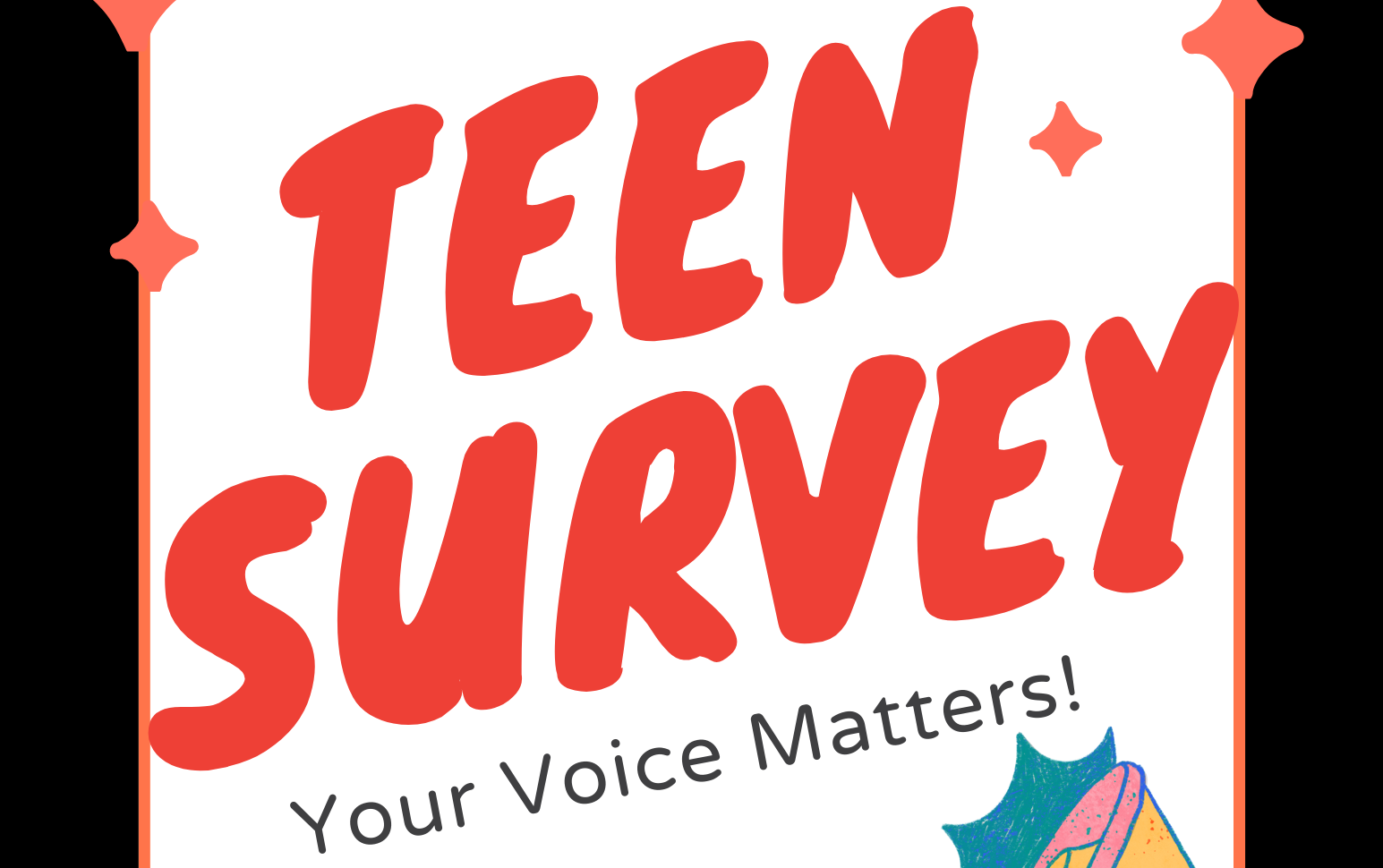Eighth graders from Jennifer Swift’s class at The Paideia School created an interactive map based on the Civil Rights Tour they took in February. While their photos and recollections from each stop are included below, for the complete experience of the trip enjoy the interactive Civil Rights Tour Map here.
On Feb, 14-15, our eighth-grade class went on a civil rights tour of Birmingham and Montgomery, Alabama. The trip connected to our race, class and gender course, in which we have been studying race. The trip was very impactful, and even though it was only two days long, our whole class learned so much more about the civil rights movement from perspectives that you don’t usually learn about in class. Being there, at the sight of historic victories and losses in the struggle of African-Americans for their civil rights, was an awe-inspiring moment. It’s one thing to learn about the effort, and eventual victories, of the civil rights movement, but it is a completely different experience to be there, where such amazing figures have stood up for what they believe in. Also, going to the museums and seeing how much pride the community has in the events that have happened in their city was inspiring. We saw how the community embraces the fact that there was extreme racism and violence and horrible acts committed there, but they choose to focus more on the bravery and sacrifice of the people who participated in the civil rights movement.

Rosa Parks Museum
Chris: The Rosa Parks museum gives you a great visualized tour of how Rosa Parks defended herself on the bus. I think that the way they present the museum is great because you are walking through the timeline. The way they set up the museum 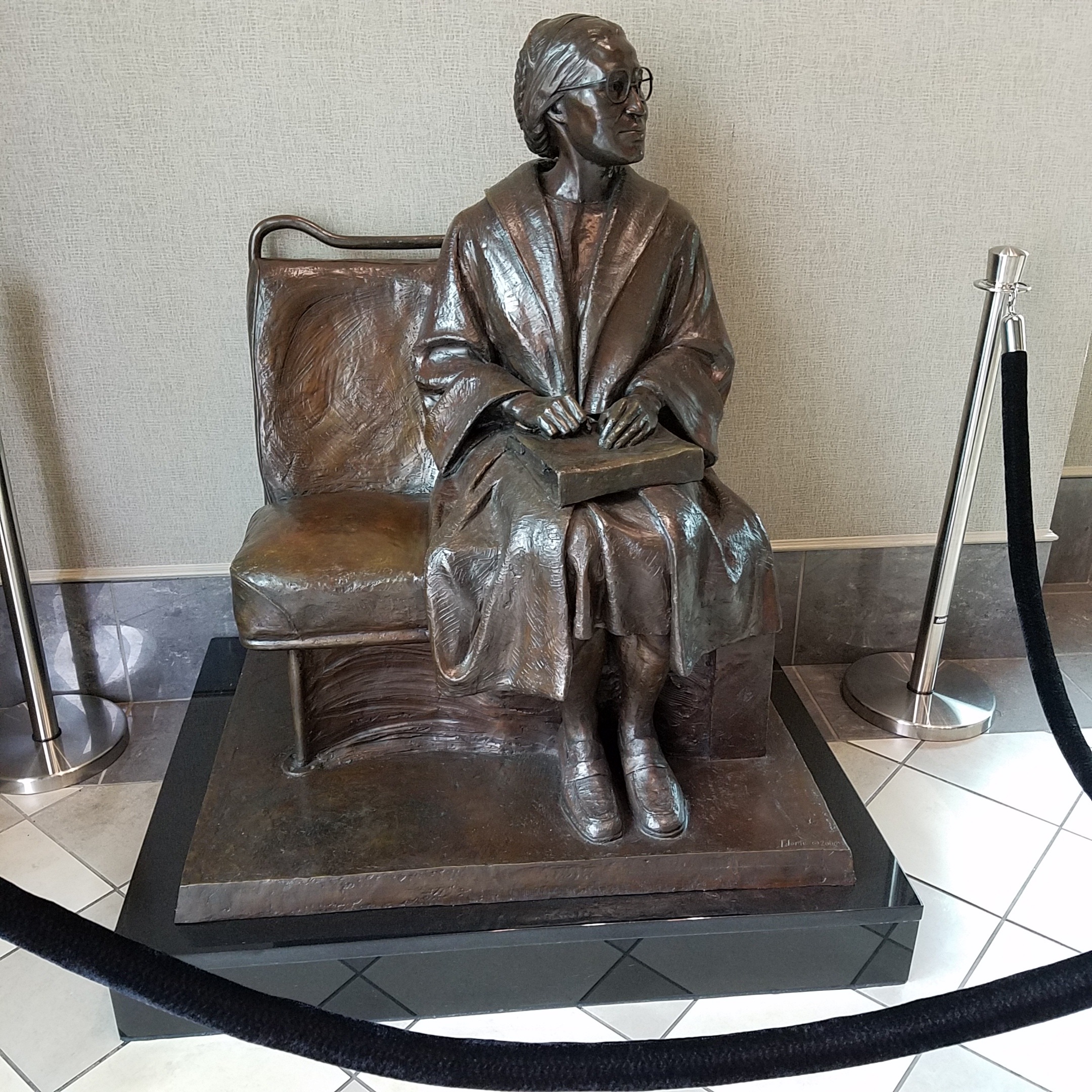 makes it easy to remember, and you get to see how Rosa Parks made it through her life and how many black people stood up for equal rights. Our experience at the Rosa Parks museum was like traveling back in time. We first watched a video on Rosa Parks and how she impacted the world. When the video finished, we walked into a room that showed exactly what Rosa Parks said and did.
makes it easy to remember, and you get to see how Rosa Parks made it through her life and how many black people stood up for equal rights. Our experience at the Rosa Parks museum was like traveling back in time. We first watched a video on Rosa Parks and how she impacted the world. When the video finished, we walked into a room that showed exactly what Rosa Parks said and did.
Jacob M.: The Rosa Parks museum was a great place to learn more about Rosa Parks. It had a simulation of Rosa Parks and how she was arrested. She refused to give up her seat to a white male and was asked to leave. She refused. The driver called the police, and she was arrested. This created a boycott that lasted a year. People of color refused to ride the buses, so that led to bus drivers going out of business. Right before things became corrupted, they announced that segregation would not be allowed on the buses. Even though the buses weren’t segregated, many of the stops and benches near the bus stop were still segregated. My favorite part of the museum was the simulation after the video. It made everyone believe we were in that time on that bus. It felt so real!
Freedom Rides Museum
Sophia: When I first saw the Freedom Rides Museum, it seemed small with little information, but the tour guide proved me wrong. When our class walked in, she greeted us with a smile and made sure that everyone was involved. She constantly asked questions for us to stay engaged and immediately answered any questions we had thoroughly. I found it interesting that she made sure that we would always think about the situations that the Freedom Riders faced and ask ourselves: What would we do in their situation? At times, she regaled to us about the Freedom Riders to such an extent that it felt like we had become a Freedom Rider and were experiencing their same situations. She never talked for the Freedom Riders, but she did show how much she knew about them through her stories. She definitely made the museum a much more enjoyable place and made it easier to understand and appreciate the Freedom Riders.
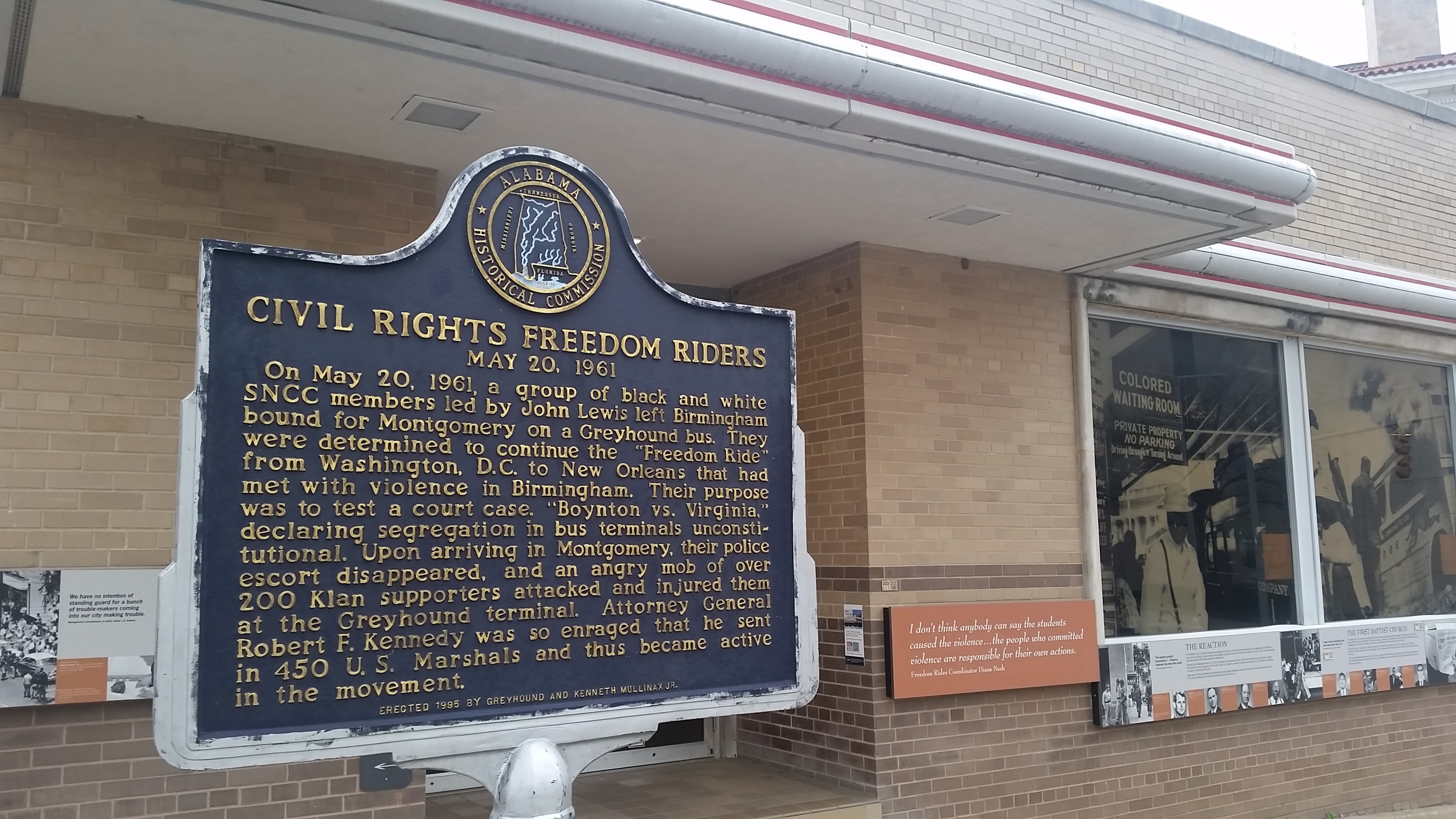 I thought the most interesting part of the tour was when the tour guide showed us the old entry way. She told us about how people of color were treated at the bus stop because their entrance wasn’t even inside and was just a shed. It really impacted me how the tour guide made us face toward her as Freedom Riders. She explained that we had just gotten off the bus and it was eerily quiet because it was a Saturday morning. She said, “Then, all of a sudden, dozens of reporters crowd around you asking why you are being a Freedom Rider. Then, your face becomes pale. The reporters don’t see anything because their backs are turned, but you see a whole gang of people with bats coming towards you.” I found this appalling that this actually happened to the Freedom Riders and inspired by what they went through despite their hardships.
I thought the most interesting part of the tour was when the tour guide showed us the old entry way. She told us about how people of color were treated at the bus stop because their entrance wasn’t even inside and was just a shed. It really impacted me how the tour guide made us face toward her as Freedom Riders. She explained that we had just gotten off the bus and it was eerily quiet because it was a Saturday morning. She said, “Then, all of a sudden, dozens of reporters crowd around you asking why you are being a Freedom Rider. Then, your face becomes pale. The reporters don’t see anything because their backs are turned, but you see a whole gang of people with bats coming towards you.” I found this appalling that this actually happened to the Freedom Riders and inspired by what they went through despite their hardships.
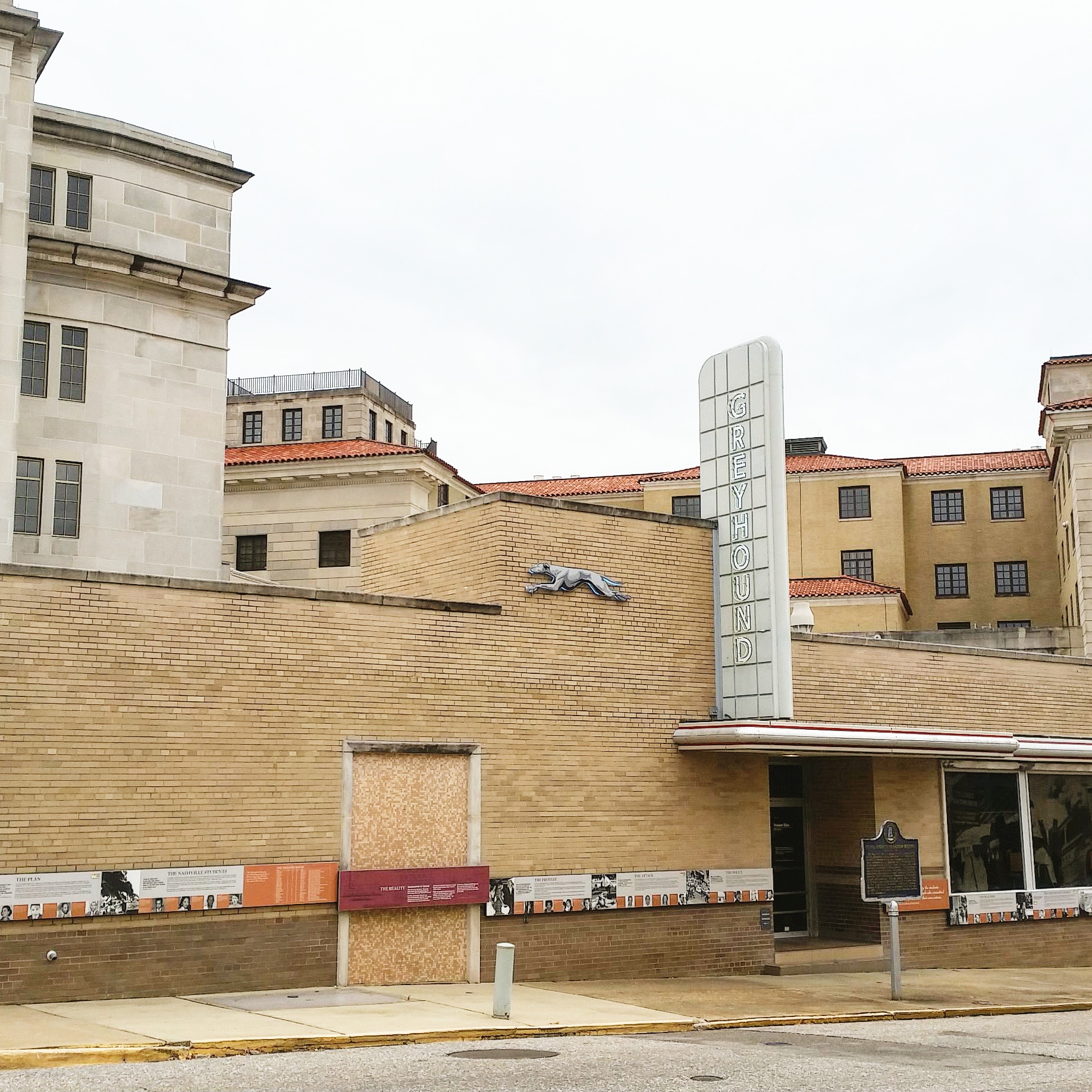 Avery: Although the Freedom Rides Museum was very small, it held many important artifacts and artwork that made for many interesting stories. We heard one story about a fair skinned black woman and a tan skinned white woman. They were arrested, and while they were in jail, they were mistaken for each other. They both protested to the officers that they had their identities wrong but the officers wouldn’t hear it. After these officers realized they made a mistake, they blamed it on the women and beat them. This saddened me to think that someone would want to take away the identity of someone just because they had the power to make someone feel insignificant or small. There were also a few art pieces that caught my eye. One was a window that had the names of all of the Freedom Riders, and the other was a mirror that had bars on it. The purpose of the window was for you to see how many people risked their lives to be a Freedom Rider and bring change to America. The mirror with the bars on it was supposed to make you look in it and ask yourself what you would stick up for or protest for that might leave you behind bars. Seeing this piece made me realize that everyone in our class had something or someone that they were willing to end up in trouble for. I can’t imagine being in the Freedom Riders place, but I hope that I would have been brave enough to help them do what America needed. Something that impacted me about this Museum was the way our tour guide made us think about what we would have done and showed us what these Riders did.
Avery: Although the Freedom Rides Museum was very small, it held many important artifacts and artwork that made for many interesting stories. We heard one story about a fair skinned black woman and a tan skinned white woman. They were arrested, and while they were in jail, they were mistaken for each other. They both protested to the officers that they had their identities wrong but the officers wouldn’t hear it. After these officers realized they made a mistake, they blamed it on the women and beat them. This saddened me to think that someone would want to take away the identity of someone just because they had the power to make someone feel insignificant or small. There were also a few art pieces that caught my eye. One was a window that had the names of all of the Freedom Riders, and the other was a mirror that had bars on it. The purpose of the window was for you to see how many people risked their lives to be a Freedom Rider and bring change to America. The mirror with the bars on it was supposed to make you look in it and ask yourself what you would stick up for or protest for that might leave you behind bars. Seeing this piece made me realize that everyone in our class had something or someone that they were willing to end up in trouble for. I can’t imagine being in the Freedom Riders place, but I hope that I would have been brave enough to help them do what America needed. Something that impacted me about this Museum was the way our tour guide made us think about what we would have done and showed us what these Riders did.
Christian: As a class we went to the Freedom Rides Museum. The museum used to be a Greyhound bus station. There were two entrances to the bus station, the colored entrance and the white entrance. The colored entrance wasn’t really an entrance. It was really a doorway that still had black people outside. If it rained, it would rain on them. If it was very hot, they were hot. If it was cold, they were cold. There was a place for people of color to eat and go to the bathroom, but it wasn’t very well maintained, and it was sometimes not open. The white entrance led inside the station where the white people had lunch counters, restrooms, and a ticket booth. On the outside of the museum, there was a timeline about the freedom riders that also had quotes from them. The timeline starts from when they were founded. The timeline had some of the freedom riders on it, and it showed their experiences from the rides. The timeline had something on what JFK said about the rides. My favorite part of the museum was going outside and seeing the fence on the outside of the museum. It was my favorite part because I was able to make a connection to today about how black people are getting beat and killed for protesting for what’s right.
 Equal Justice Initiative
Equal Justice Initiative
Katherine: The U.S. was one of the few countries that allowed children to be sentenced to death until 2005. The Equal Justice Initiative (EJI) didn’t believe killing a kid was the most productive action to take, so they helped convince the U.S. to rule against the death penalty. Now, they fight to have a fair trial for every person who is wrongly convicted, whether they are 13 or 30.
I feel it is extremely unfair that someone just like me could be accused of something they had nothing to do with. When I heard the stories told by EJI’s staff members, it was hard for me to even imagine someone my age in prison for lifetime, let alone having no support nearby. One story was of a 39-year-old man who was convicted when he was 13 years old. The EJI managed to help him out of prison, but it is still heartbreaking to hear his story. It is hard for me to even imagine someone my age in prison for lifetime; you leave your home, family and everything you know and move to a empty, cold cage.
It is both amazing and discouraging to know that the U.S., a country that says each individual has his own rights, forces kids to spend their life in prison. Visiting the EJI reminded me of how many people in our community die in prison just because they can’t afford an attorney to properly defend themselves. The EJI does great work, and I think if we keep spreading their message, we will have a better community.
Isaac: When I found out that kids my age were being sentenced to life in prison without parole, I felt numb. The fact that a judge could take away a child’s freedom and life is astounding to me. “The death penalty just says when they (the convict) are going to die because life in prison without parole means death in the prison” – Brooks Emanuel, a lawyer at EJI
To me, this means a child can be killed at my age; after that, they are waiting to die. It’s like a horror movie where they are a vengeful spirit, not able to be dead but not alive. While the EJI got rid of the death penalty for children, I don’t see a difference between life without parole and death.
In an interview, Bryan Stevenson, the founder of EJI, was asked if he thought race or class was the bigger factor in his case. Stevenson said if Hinton had more money, he could have afforded a better lawyer and forensics specialist. I agree; maybe this is part of the reason I felt numb. As I was leaving the building, I felt like I was doing nothing with my life. Brooks also talked about the treatment of the inmates, how the guards had to give more attention to the death-row inmates because they weren’t allowed to commit suicide before their execution. While more than 500 inmates kill themselves a year, the EJI does some of the most overlooked work while they are still changing lives.
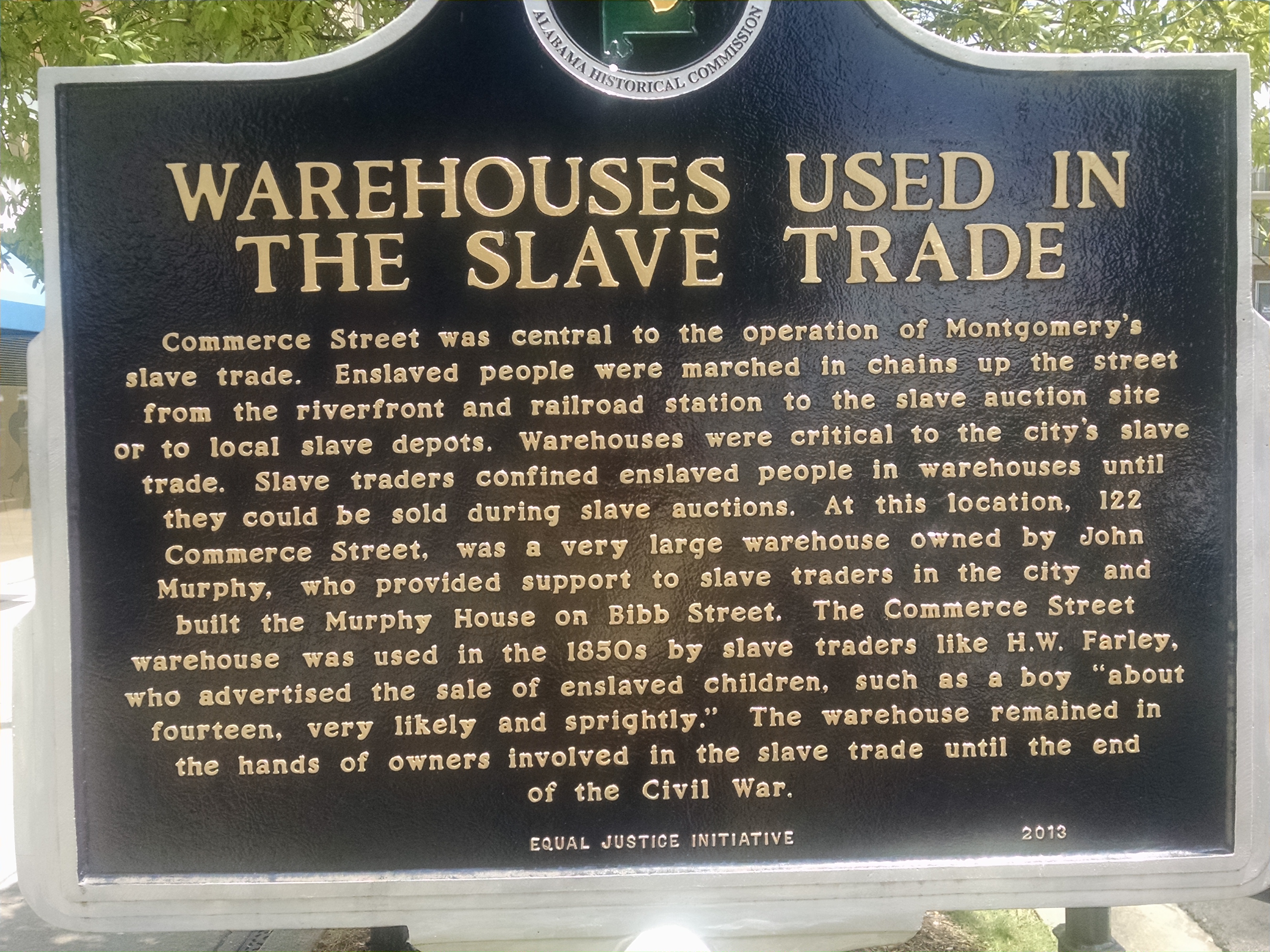 Anna Claire: Going to the EJI was an inspiring experience. The part that struck me the most was how Bryan Stevenson feels so strongly about helping those who have been sentenced to life without parole or death for a crime that was less major or that they didn’t even commit. The case that they told us about when we visited was of Mr. Anthony Hinton. He was wrongly convicted of killing two people at convenience stores on two separate nights. The only evidence that they had was the fact that he had the same type of gun that supposedly killed the victims. Hinton was in jail on death row for 30 years, during which his mother died. The EJI worked on his case for 16 years, and they had a lot of trouble getting the case reopened. His case went all the way to the Supreme Court, which finally allowed another trial.
Anna Claire: Going to the EJI was an inspiring experience. The part that struck me the most was how Bryan Stevenson feels so strongly about helping those who have been sentenced to life without parole or death for a crime that was less major or that they didn’t even commit. The case that they told us about when we visited was of Mr. Anthony Hinton. He was wrongly convicted of killing two people at convenience stores on two separate nights. The only evidence that they had was the fact that he had the same type of gun that supposedly killed the victims. Hinton was in jail on death row for 30 years, during which his mother died. The EJI worked on his case for 16 years, and they had a lot of trouble getting the case reopened. His case went all the way to the Supreme Court, which finally allowed another trial.
This really made me put myself in the place of Mr. Hinton and wonder how he stayed sane when he knew he was innocent and nobody was believing him. Also, being on death row for 30 years and not knowing what is going on in the world around you or to anybody you know and being in complete isolation is something that most people will never have to experience, and I hope I never have to. Seeing him learn how to do things like use an ATM and a cell phone made me admire all the work the EJI put in. I was in awe of the people that spent 16 years trying to get an innocent man off of death row and how much confidence they had in his innocence. I thought everyone working there were so inspiring, dedicating their life to helping others.
 Meeting Janet & Charles Alexander
Meeting Janet & Charles Alexander
Hannah: At the Best Western Plus Carlton Suites, we were able to talk with Mark Alexander’s (our Spanish teacher) parents. They both grew up in Birmingham and were alive during the time of the civil rights movement. They had a chart that recalled everything they remember from the time they were 11 years old. What really had an impact on me was how much they were willing to share. They shared stories where they admitted to being prejudice, and Mark’s dad, Charles, told many stories about his father, one of which struck me the most.
Charles’s father worked in steel, so everyday he would come out of the steel mines covered head to toe in debris from the mine. When Charles was about 12 years old, the steel mines began to have integrated showers. Charles’s father refused to shower in the integrated showers, so he would come home every day, and his wife would wash all of his clothes while he showered at the house.
First, I was very surprised and impressed that Charles would be so honest to share this story. However, I was in total disbelief that Charles’s dad would do such a thing. I was aware that many people in the South did not agree with the civil rights movement; however, the fact that it was the grandfather of someone that teaches me opened my eyes. Because of the stories that Charles told us, I realized that not everybody shares the same beliefs, and that even if I don’t agree with them, I should still respect the person. They are not only defined by what they believe.
In addition, I think Janet and Charles showed great bravery when admitting to being prejudice at times and being afraid to protest. It takes a lot of courage to admit to your weaknesses, so I applaud them for being able to admit their flaws to a bunch of eighth graders.
 Anna: Many of the stories Charles told us were based on him fighting against racism, but he opened up on one of the stories from when he was on the other side. Charles son’s best friend was black. His son and the young man always hung out together. One night, the young man came to pick up his son so they could hang out. Their front porch light was out, so when Charles looked out the window to see who it was, all he saw was a black man’s silhouette. Charles said, “I froze until I realized it was him when he called out his name.” Charles hoped the boy had not realized the hesitance to open the door, but he knew his son’s friend wouldn’t have called out his name if he had not felt the fear coming from Charles. He knew what he did was wrong, and he felt so dirty about it.
Anna: Many of the stories Charles told us were based on him fighting against racism, but he opened up on one of the stories from when he was on the other side. Charles son’s best friend was black. His son and the young man always hung out together. One night, the young man came to pick up his son so they could hang out. Their front porch light was out, so when Charles looked out the window to see who it was, all he saw was a black man’s silhouette. Charles said, “I froze until I realized it was him when he called out his name.” Charles hoped the boy had not realized the hesitance to open the door, but he knew his son’s friend wouldn’t have called out his name if he had not felt the fear coming from Charles. He knew what he did was wrong, and he felt so dirty about it.
We all have these kinds of moments, whether it is about race or not, but it takes so much honesty and bravery to open up to a room full of teenagers about something you feel so vulnerable and ashamed about. I think we should all learn how to do this, because if we did we would be capable of much deeper conversations that we could get more out of. This story affected me because when you think of an old Southern white man from the 1950s, what pops in my head is, unfortunately, a racist. Charles completely broke this stereotype, though, because he, one, fought for equal rights, and two, owned up to the mistakes he made. If we acknowledged our mistakes, we would have as clear a vision as Charles does on this topic.
 The Birmingham Civil Rights Institute
The Birmingham Civil Rights Institute
Alex: Walking into the Birmingham Civil Rights Institute, I was excited to see why this was rated one of the top museums in Birmingham. Soon after entering, we headed into a room where a screen played a movie that recapped the last 100 years in America regarding race. After the video was finished, the screen raised, we headed into the main portion of the museum. This, in my opinion, was one of the coolest entrances into a museum that I’ve ever experienced. Walking through the museum, I was intrigued by how detailed every exhibit was. The Birmingham Civil Rights Institute does a good job giving insight into what life was like in the 30s through the 80s.
Caroline: Going through The Birmingham Civil Rights Institute was a very moving experience. There were graphic pictures and explanations of people being beaten up, tortured and more. I feel like I got to know a lot more about the history of civil rights and Alabama. One part that especially made me sad was the display case that had the shoes, necklace, bracelet, purse and Bible of one of the girls who died in the bombing of the 16 Avenue  Baptist Church. Another object in the case was a part of a brick that was found in the little girl’s skull. It was awakening to see what human beings would do to other human beings just because they looked different than them.
Baptist Church. Another object in the case was a part of a brick that was found in the little girl’s skull. It was awakening to see what human beings would do to other human beings just because they looked different than them.
Layney: This was a great experience for all ages. It was eye-opening to see all the struggles African-Americans had to face and still face today. I had prior knowledge about the civil rights movement, but it was through textbooks and novels. I now have a much better understanding of how bad it really was from seeing things from that time period, not just reading about it. Hearing people reenact the terrible things people said about African-Americans and seeing the weapons used against them made the heartbreaking stories so much more real. It helped me to better understand the hardships people of color had to face daily just to get basic rights. I would strongly recommend everyone to go to the Birmingham Civil Rights Institute if they get the chance.
Alabama Sports Hall of Fame
 Luca: Although The Alabama Sports Hall of Fame isn’t directly focused on civil rights, our class of 15 students were able to learn some memorable stories about African-American sports players. We learned about an Olympic gold medal track star, Jesse Owens, who was born in Oakville, Alabama, in 1913. He grew up in a one-bedroom house with nine other children, and he was the youngest. He lived a hard life, working every day for 16 hours picking cotton for his family. From the beginning of this story, we knew he was going to overcome great odds to become who he wanted to be. As I tried to picture myself in his shoes, I thought of how I want to become a professional tennis player. This man had to do work, he had to deal with racism, and my life is completely easy compared to what he had to go through. We were told that when Jesse won his four medals, Adolf Hitler turned his back, unwilling to congratulate Owens. This again showed me that he was able to overcome the emotion of being disregarded by this powerful man and still go on to be successful. Someday, I want to be as successful as he was and overcome the hardships I will have to become the tennis player I want to be.
Luca: Although The Alabama Sports Hall of Fame isn’t directly focused on civil rights, our class of 15 students were able to learn some memorable stories about African-American sports players. We learned about an Olympic gold medal track star, Jesse Owens, who was born in Oakville, Alabama, in 1913. He grew up in a one-bedroom house with nine other children, and he was the youngest. He lived a hard life, working every day for 16 hours picking cotton for his family. From the beginning of this story, we knew he was going to overcome great odds to become who he wanted to be. As I tried to picture myself in his shoes, I thought of how I want to become a professional tennis player. This man had to do work, he had to deal with racism, and my life is completely easy compared to what he had to go through. We were told that when Jesse won his four medals, Adolf Hitler turned his back, unwilling to congratulate Owens. This again showed me that he was able to overcome the emotion of being disregarded by this powerful man and still go on to be successful. Someday, I want to be as successful as he was and overcome the hardships I will have to become the tennis player I want to be.
 Patrick: We also got to learn about the track runner, Carl Lewis. Like Jesse Owens, Carl Lewis also earned four gold medals in a single Olympic Games. He was an Olympic sprinter, and he participated in the long jump. Although he faced discrimination, he didn’t have to face as much as Jesse Owens had to because Carl Lewis participated in the 1984 Olympic Games. Throughout Lewis’ career, he was able to get nine gold medals! Not only did he get nine gold medals, but he is a man of color, so throughout his life, he has been discriminated and put down. I think that this a very insightful story because it makes me not want to give up. He was able to break through racism and never give up, so now I don’t want to give up either. Overall, I think the Alabama Sports Hall of Fame was a very nice trip. We were able to hear very memorable stories about athletes who, against the odds, made great achievement
Patrick: We also got to learn about the track runner, Carl Lewis. Like Jesse Owens, Carl Lewis also earned four gold medals in a single Olympic Games. He was an Olympic sprinter, and he participated in the long jump. Although he faced discrimination, he didn’t have to face as much as Jesse Owens had to because Carl Lewis participated in the 1984 Olympic Games. Throughout Lewis’ career, he was able to get nine gold medals! Not only did he get nine gold medals, but he is a man of color, so throughout his life, he has been discriminated and put down. I think that this a very insightful story because it makes me not want to give up. He was able to break through racism and never give up, so now I don’t want to give up either. Overall, I think the Alabama Sports Hall of Fame was a very nice trip. We were able to hear very memorable stories about athletes who, against the odds, made great achievement
This civil rights tour was created by Paideia School eighth grade students, and the introduction was written by Anna Claire Shuman.
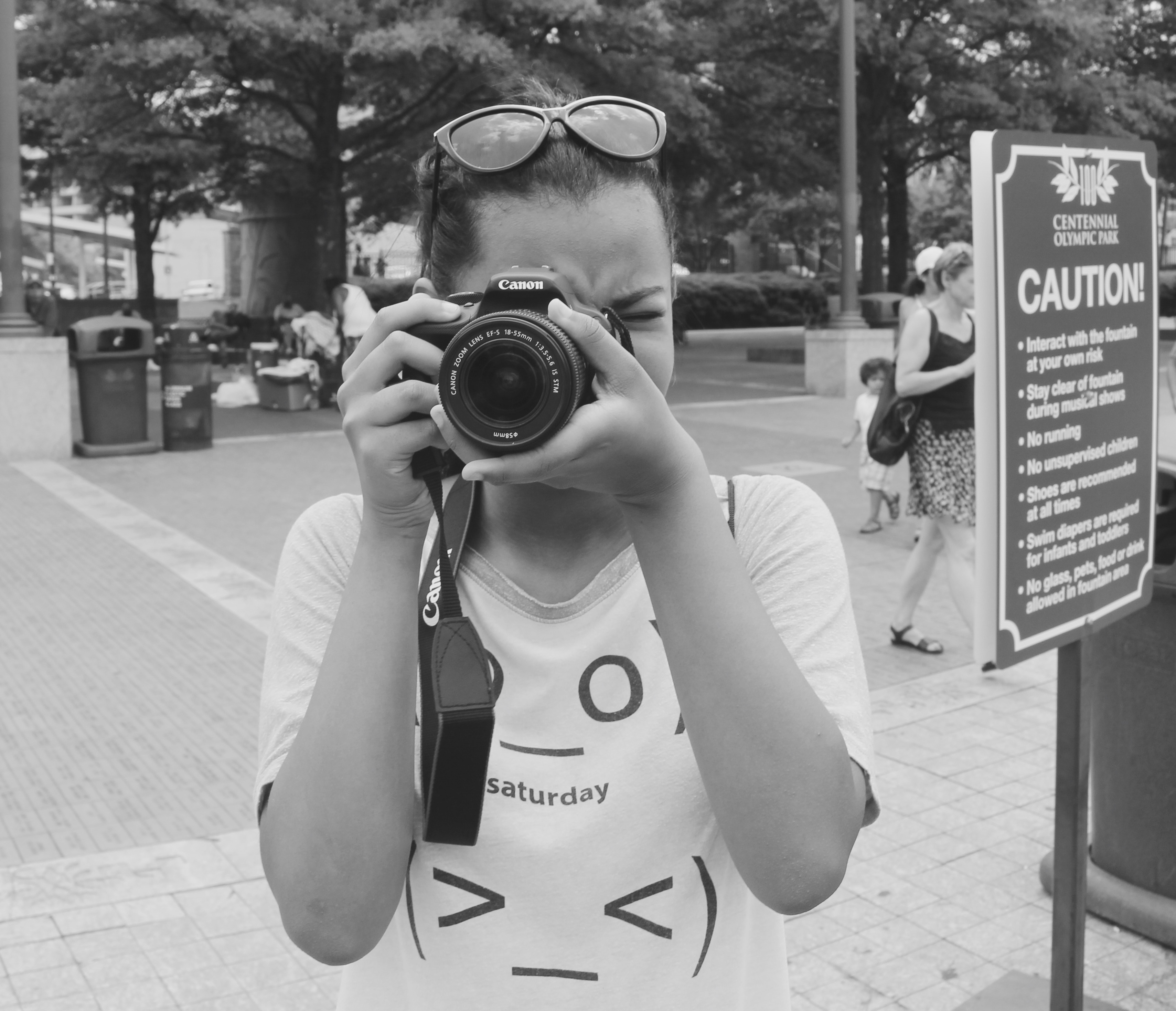 Do you know a teen who would be interested in the unique opportunity to attend a fun and interactive multimedia summer camp?
Do you know a teen who would be interested in the unique opportunity to attend a fun and interactive multimedia summer camp?
The only program of its kind in metro Atlanta, VOX Media Café offers a unique hands-on opportunity for teens to explore multimedia techniques for storytelling, while learning about the fundamentals of journalism and creating a tangible multimedia product.
The sessions are led by a talented group of media professionals from across Atlanta, who embrace VOX’s teen-driven philosophy and support teen participants in pursuing stories and creating pieces that interest them.
Through this safe and experiential learning opportunity, teens will network with media experts, take field trips to gather footage, visit local media organizations, create comprehensive media packages, and get to know peers from schools all over the city. Apply at: bit.ly/VMC2017

